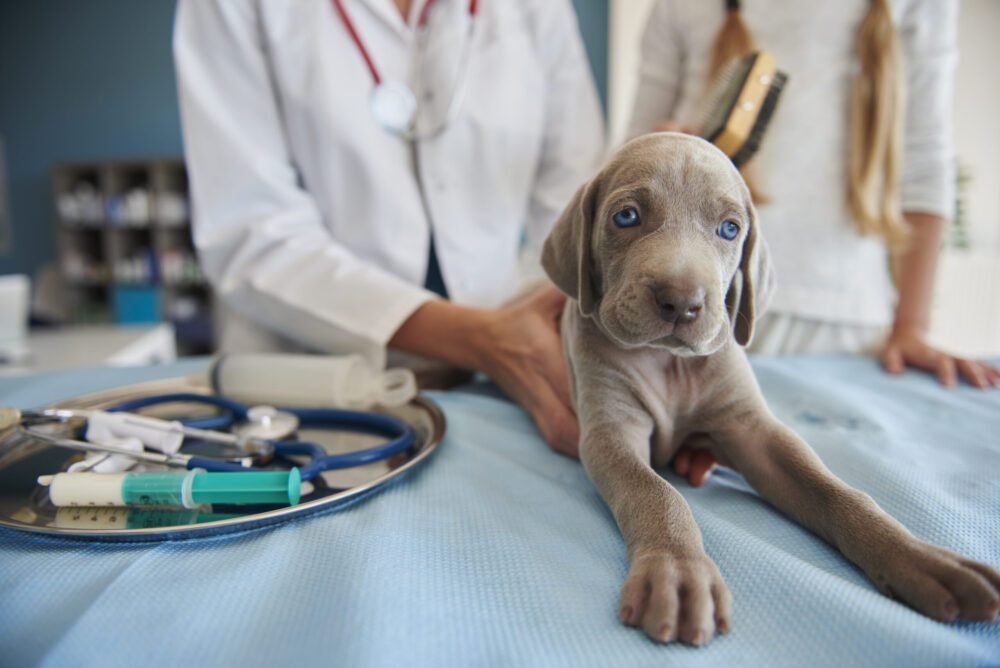
Canine Parvo outbreak in Kyle
Sierra Martin, Amira Van Leeuwen, Kevin Baxter | Staff Reporters
CENTRAL TEXAS – The increase in pet owners during the pandemic coupled with a national shortage of veterinarians has led to an outbreak of the Canine Parvovirus or “Parvo” in the Kyle area.
Dr. Ashley Opyt, a veterinarian at Firehouse Animal Center in Kyle with over fifteen years of veterinary experience, has noticed a recent increase in Parvo.
According to Dr. Opyt, veterinarians across the nation have seen an increase in Parvo cases throughout the COVID-19 pandemic. With the rise in pet ownership during the pandemic, puppies have more opportunities to contract the virus.
“Combining more puppies in the population and plus, they’re getting out more, it’s really caused a spike,” said Dr. Opyt. “Because of the increase of pet ownership, the nationwide shortage of veterinarians has gotten worse. So it’s gotten harder to get pets into the veterinarian so that may end up delaying some of their vaccinations and which is compounds the issue.”
According to the American Veterinary Medical Association, “Canine Parvovirus is a highly contagious virus that can affect all dogs, but unvaccinated dogs and puppies younger than four months old are the most at risk. Dogs that are ill from canine Parvovirus infection are often said to have “Parvo.” The virus affects dogs’ gastrointestinal tracts and spreads by direct dog-to-dog contact and contact with contaminated feces (stool), environments, or people.”
Although most dogs will be vaccinated by the time they reach six-months or one-year-old, any unvaccinated dog is susceptible to Parvo.
“It’s really important to make sure that you get the coverage that you need,” said Dr. Opyt.
Dr. Opyt recommends that pet owners be mindful of where they take their puppies before they are fully vaccinated.
According to Dr. Opyt, typical symptoms of Parvo include vomiting, diarrhea, fatigue and loss of appetite.
Vaccinations usually cost about $20 to $30 each, not including exam fees for basic puppy care.
Dr. Opyt recommends pet owners consider low-cost clinics dedicated toward affordable pet care, like Emancipet.
Emancipet’s mission is to provide low-cost care to pets. Other options would be to buy and give the vaccine yourself or go to a vaccination clinic, but the significant upside to Emancipet is their full-service veterinary assistance. The veterinarian will talk with you and make sure that everything is done correctly, according to Dr. Opyt.
“You’re going to get to talk with a veterinarian,” said Dr. Opyt. “They’re going to make sure that the vaccine is given appropriately and make sure to set you up for the right vaccine schedule.”
Dr. Opyt highly recommends not using vaccines from feed stores since they don’t always store vaccines properly.
“I have seen instances where they’re storing vaccines outside,” stated Dr. Opyt. “Obviously, a vaccine that’s supposed to be refrigerated is outside in one-hundred-degree heat isn’t going to work.”
The vaccine manufacturers don’t guarantee the effectiveness of the vaccine if you give it at home. If a veterinarian gives the vaccine and the dog still comes down with Parvo, they will pay for the medical costs associated with treating it.
If your dog encounters Parvo, Dr. Opyt recommends cleaning hard surfaces with diluted bleach. Although there is no way to disinfect your yard, laundry needs to be washed with detergent and bleach and dried thoroughly. Other than removing infected organic material from your yard, such as feces, you must let the virus degrade on its own.
According to Dr. Opyt, there is no specific medication that will kill the virus itself. The only way to treat Parvo is with supportive care, which is effective in saving about 80% of infected puppies. Parvo can also be expensive to treat, with minimal basic supportive care starting at $500 and intensive supportive care reaching up to $4,000.
Dr. Opyt advises pet owners to find a balance between safety and exposure. If dog owners don’t expose their puppies to being around other people, other dogs, and riding in the car before they’re sixteen weeks of age, the puppy may not be as well-adjusted as they age into adulthood.
“It’s important to figure out ways to get your pet around other people, other dogs, and get them into an organized puppy class so that they can be well-adjusted while also staying safe,” said Dr.Opyt.






